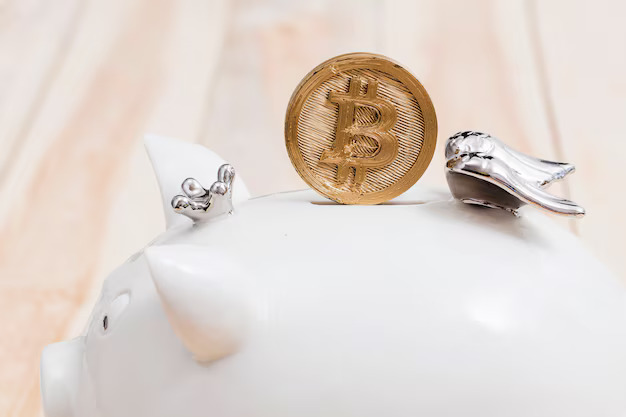Heating Home with Bitcoin Mining: How to Heat a House with Mining
Utilizing the heat generated by computational processes provides a practical approach to maintain comfortable indoor temperatures while offsetting utility bills. By harnessing the warmth produced during intensive calculations, it’s feasible to transform an energy-consuming activity into a dual-purpose operation. Embracing this strategy not only optimizes energy usage but also allows homeowners to rethink their monthly expenditures on climate control.
Conducting complex algorithms or processing transactions generates a considerable amount of thermal energy. Implementing a setup that captures and redistributes this heat can significantly diminish reliance on traditional heating systems. Individuals can enhance the efficiency of their residences while turning an expense into a revenue stream, especially during colder months.
Moreover, understanding the technical requirements of such setups empowers you to tailor solutions specifically for your space. Investing in efficient cooling systems that can redirect excess warmth into living areas will pave the way to substantially lower energy requirements. Prioritizing smart design not only maximizes comfort but also provides an economic alternative to conventional heating methods.
Understanding the Relationship Between Crypto Mining and Heating
Consider repurposing the heat generated from computing hardware. High-performance systems used for blockchain validation emit substantial warmth. Instead of letting this energy dissipate, utilize it to warm living or working spaces. This approach not only maximizes resource usage but also enhances energy efficiency.
Heat Capture Techniques
Implementing heat capture requires strategic planning. One option is to place mining rigs in cooler areas, such as basements or garages, reducing the need for additional thermal regulation. Conduct a thermal analysis of your setup to identify hotspots that can effectively radiate warmth into adjacent environments.
Integrating Heat Exchange Systems
Consider investing in a heat exchange system that channels excess warmth into water heating setups or circulation systems. Systems like these can significantly reduce reliance on traditional heating solutions, providing a dual function for mining rigs. The integration of these technologies can create an innovative synergy, benefiting both your operations and comfort levels.
Regular maintenance of mining equipment is crucial. Keeping machinery clean improves performance and extends lifespan, resulting in more consistent heat generation. Monitoring operating temperatures can aid in troubleshooting and optimizing the heat output for other applications.
Choosing the Right Mining Equipment for Energy Savings
Select models that offer high energy efficiency ratings, such as those with lower wattage consumption per hash rate. ASIC miners, specifically designed for particular algorithms, often outperform general-purpose hardware in energy use.
Look for units featuring advanced cooling systems. Integrated fans or immersion cooling can significantly reduce electricity usage compared to traditional methods.
Prioritize components that allow for overclocking. This enables you to adjust performance levels based on your specific operational needs, maximizing output while minimizing power draw.
Consider modular setups, which facilitate independent management of separate units. This enables you to deactivate less productive rigs during low-demand periods, conserving energy.
Investigate second-hand or refurbished models. Often, these come at a fraction of the cost yet provide solid performance and energy consumption metrics.
Review real-world performance benchmarks from various models to ensure you select hardware that delivers the best ratio of output to power consumption.
Utilizing Heat Generated from Mining for Home Heating
Repurpose the warmth from computational activities in your residence for domestic comfort. Implement the following strategies:
- Direct Air Exchange: Position mining rigs near heating ducts or vents. The hot air expelled can be redirected into living spaces, significantly enhancing thermal distribution.
- Heat Exchangers: Invest in heat exchanger units that transfer warmth from mining equipment to your home’s heating system. This setup ensures efficient integration and maximizes temperature regulation.
- Water Heating Systems: Connect mining devices to water heating tanks. Excess thermal energy can be used to heat water for household activities such as bathing or washing.
- Insulation: Ensure that the room housing mining equipment is well-insulated. This will help retain heat, creating a warmer environment while optimizing the hash rate efficiency.
- Smart Thermostats: Utilize programmable thermostats to control temperatures. Set schedules that align with mining routines for optimum warmth distribution during peak usage times.
By innovatively harnessing generated thermal energy, you can lower reliance on traditional sources while enhancing personal comfort during colder months.
Calculating Potential Savings from Mining-Generated Heat
To determine the value derived from heat produced by hardware operations, first assess the energy consumption of your systems. For instance, a mining rig consuming 1,200 watts will generate approximately 1,224,000 BTUs per day. This output can significantly contribute to reducing traditional given energy requirements.
Next, calculate the annual heating output by multiplying daily BTUs by 365. For the previous example, this totals roughly 447,360,000 BTUs annually. Convert this figure into therms, a common measurement of thermal energy, where 1 therm equals 100,000 BTUs. Thus, in this scenario, you would yield around 4,473 therms per year.
Now, evaluate local energy pricing. If the average rate per therm is $1.00, you can realize approximately $4,473 in annual savings. Adjust this figure according to your specific local rates for more precision.
Additionally, consider the efficiency of your space. Insulation quality and ambient conditions impact the overall benefit. A well-insulated space maximizes the utilization of mined energy output.
Lastly, don’t overlook compliance and safety factors. Ensure that the mining equipment is positioned to prevent overheating or other hazards, thus maintaining a functional balance between energy generation and environmental safety.
Legal and Regulatory Considerations for Heat Usage in Mining
Review local regulations pertaining to energy utilization and waste heat management in your area. Compliance with energy laws and environmental standards is paramount. Ensure your activities align with guidelines set by local governing bodies to avoid potential penalties.
Permits and Licensing
Check whether specific permits are required for harnessing excess heat from operations. Some jurisdictions may mandate licenses for utilizing waste heat in residential or commercial applications. Thoroughly investigate the necessary documentation and application processes to ensure all bases are covered.
Tax Incentives and Subsidies
Research any available tax credits or subsidies for utilizing renewable energy or waste heat. Many regions offer financial incentives to encourage sustainable practices. These programs can substantially reduce operational expenditures while promoting eco-friendly initiatives. Contact local tax authorities for detailed requirements and eligibility criteria.
Evaluating Long-Term Cost Benefits of Crypto Mining for Heating
Utilize heat generated from computational operations to offset expenditures on residential warmth. Calculate potential revenue from coin production against electricity expenses and equipment maintenance. Consider the geographical factors; areas with lower power tariffs and cooler climates can yield better financial outcomes.
Analyze the efficiency of hardware in converting electric energy into coinage while producing heat. ASIC miners typically demonstrate higher performance compared to GPUs but require upfront investment. Assess return on investment after factoring in longevity and resale value of equipment.
Monitor fluctuations in cryptocurrency valuations. Price spikes can lead to increased returns, whereas downturns may necessitate reevaluating the viability of your setup. Factor in potential regulations that could impact profitability in the long term.
Investigate local energy sources, such as renewable options, which might lower expenses. Establish partnerships with energy providers for favorable rates or incentives for miners. Consider implementing systems to recycle the excess heat for additional utilities, enhancing overall efficiency.
Model different scenarios using spreadsheets to project cash flows over multiple years. Include taxation and potential penalties related to energy consumption in your calculations. Regularly revisit your assumptions to adapt to market changes and technological advancements.
Q&A: How to Heat a House with Mining
Can you use bitcoin mining to heat your home during winter and reduce heating bills at the same time?
Yes, using bitcoin mining to heat your home is an efficient way to reduce heating bills, as mining generates a lot of heat as a byproduct. A bitcoin mining rig like an Antminer S9 or similar hardware can be set up as a space heater, especially in cold climates. This approach allows you to offset the cost of heating by earning BTC while staying warm.
What is a practical setup for heating your home with bitcoin mining while maintaining control over temperature?
A smart home setup with a home assistant, inline fan, and radiator allows precise control of the miner heat and temperature output. You can integrate an HVAC system or use a brazed plate heat exchanger to redirect the mining heat exhaust into your living space. This way, you use the heat effectively without overheating, while mining BTC in a more residential-friendly setup.
How do pleb mining setups make it easier for small-scale users to heat their house using bitcoin mining?
Pleb mining encourages individuals to use small-scale mining machines like the Antminer S9 at home to heat their house without needing industrial-grade infrastructure. These home miners generate enough heat to warm a room and can be paired with exhaust fans and ducting systems to push warm air into the house. It’s a low-cost entry for using mining heat to reduce heating costs while contributing to the bitcoin network.
What are the potential limitations of using bitcoin mining as a heat source for residential heating?
While bitcoin mining rigs produce much heat, the cost of electricity and the noise from mining hardware like the Antminer S9 can be drawbacks. Additionally, not all homes are equipped to handle the HVAC modifications needed to use miner heat effectively. High-performance computing for mining also requires constant power and airflow, which can be challenging to manage in a residential environment without proper planning or smart exhaust fan setups.
How can a bitcoin miner be used to heat your house while mining crypto efficiently?
A bitcoin miner generates substantial heat as a byproduct of mining crypto, which can be redirected to heat your house. By placing the miner in the same room you want to warm and using a basic ventilation setup, you can get heat while continuing to mine bitcoin. This dual-purpose approach is popular in the bitcoin community, especially in regions where it’s cold outside for much of the year.
What role does Braiins play in optimizing a mining system for home mining and heat control?
Braiins offers open source firmware that allows users to control the miner’s power usage and fan speed, helping to regulate the heat from mining. With Braiins, you can control the temperature of your home mining setup more precisely, making it easier to use bitcoin mining as a reliable heat source for residential spaces.
Can a mining system be integrated with a water heater to heat homes more evenly?
Yes, it is possible to integrate a mining system with a water heater using heat exchangers. This method allows the heat from mining to be transferred to water, which can then be circulated through radiators or underfloor systems to heat homes evenly. This approach is especially effective in small scale setups aiming to maximize both mining efficiency and household heating.
How does the price of bitcoin affect people using miners to heat their homes?
When the price of bitcoin rises, home mining becomes more profitable, allowing users to offset heating costs more significantly. On the other hand, when the price drops, the economic benefit is reduced, though users still get heat as a useful byproduct. Many in the bitcoin community continue mining regardless of market swings, especially when using a bitcoin miner primarily to heat my home or reduce dependence on traditional heating.



